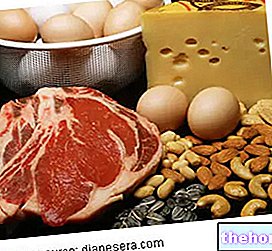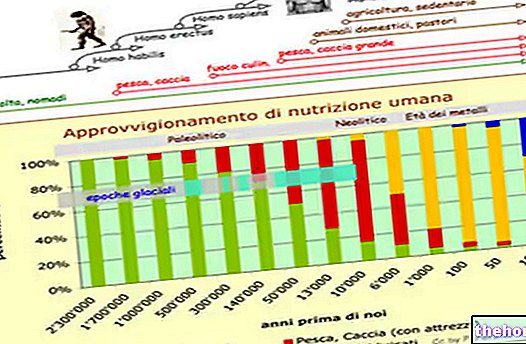The breakdown of the diet is a fundamental step in the drafting of any dietary therapy.
After calculating the basal caloric requirement (basal metabolism or MB) and the specific caloric requirement (hypo, normal or hyper caloric), it is necessary to divide it in two different ways:
- Breakdown into nutrients
- Energy breakdown of meals

- Recommendations for a "correct and balanced diet."
- The specific and subjective nutritional needs in relation to physical activity
- Possible presence of metabolic pathologies
A CORRECT diet boasts the following energy percentages:
- Protein: On average 12-13% of calories or better 0.75-1.5g per kilogram of desirable physiological body weight (which includes NORMAL body mass percentages). Proteins must be calculated with reference to age and the level of sporting activity. Furthermore, it would be advisable for at least 1/3 of the protein intake to be of animal origin to ensure a good overall biological value.
- Lipids: they range from 25 to 30% of calories; They MUST include 2.5% essential fats and should consist of 2/3 unsaturated lipids and 1/3 saturated lipids.
- Carbohydrates: represent the remaining calories (MAX 63%), that is: kcal of CHO = kcal TOT - kcal of Proteins - kcal of Lipids; NB only 10-12% of the total energy should derive from simple carbohydrates (glucose-fructose-galactose-sucrose-lactose-maltose)
With such a "starting point", the nutrition professional is able to SHAPE the nutritional distribution on the basis of specific and subjective needs; in the event that the level of physical activity is VERY high and is characterized by the practice of sport intense and frequent, it is possible (and desirable!) to manage the percentages and grams of macronutrients in the most congenial way. For example, a cross-country athlete who shows serious difficulties in maintaining muscle trophy due to the high volume of aerobic activity ( for example from 6 to 10 hours per week), could make use of a DOUBLE protein coefficient compared to a sedentary subject, that is: 1.5gxkg instead of 0.75gxkg of desirable physiological body weight.
The other fundamental aspect that should be taken into consideration is the possible presence of metabolic PATHOLOGIES or those concerning the efficiency of the kidneys, liver, pancreas, stomach, intestine, etc. This means that, for example, treating a diabetic subject could be it is useful to keep the percentage of carbohydrates to a minimum (50-55%), in particular of simple ones (10%); the same could be applied with regard to saturated or hydrogenated fats in reference to a hypercholesterolemic subject, or for proteins in some cases of kidney failure.
By energy breakdown of meals, on the other hand, we mean the overall caloric breakdown in the different meals of the day. We remind you that, although in practice the subjective needs are mainly taken into account (work habits and sporting activities), there is a general scheme that can be easily applied in most cases. It provides for an energy distribution of:
- 15% of calories at breakfast (not less than 12-13% and not more than 20%)
- 05% of calories in the mid-morning snack (not less than 4% and not more than 8-10%)
- 40% of the calories in lunch (not less than 35% but absolutely not more than 40%)
- 05% of calories in the mid-morning snack (not less than 4% and not more than 8-10%)
- 35% of the calories in the dinner (not less than 30% but absolutely not more than 35-40%)
It should be noted that the nutritional organization of the sportsman, and above all of the elite athlete, does not take into account most of these percentages; this happens because in the presence of very high energy needs (from 4000 to 6000kcal per day), the sportsman often manifests considerable digestive and organizational difficulties to which it would be appropriate (and convenient!) to comply ALSO through the use of food supplements; the consumption of single meals which often reach 2000kcal is not easy to manage.























-nelle-carni-di-maiale.jpg)




